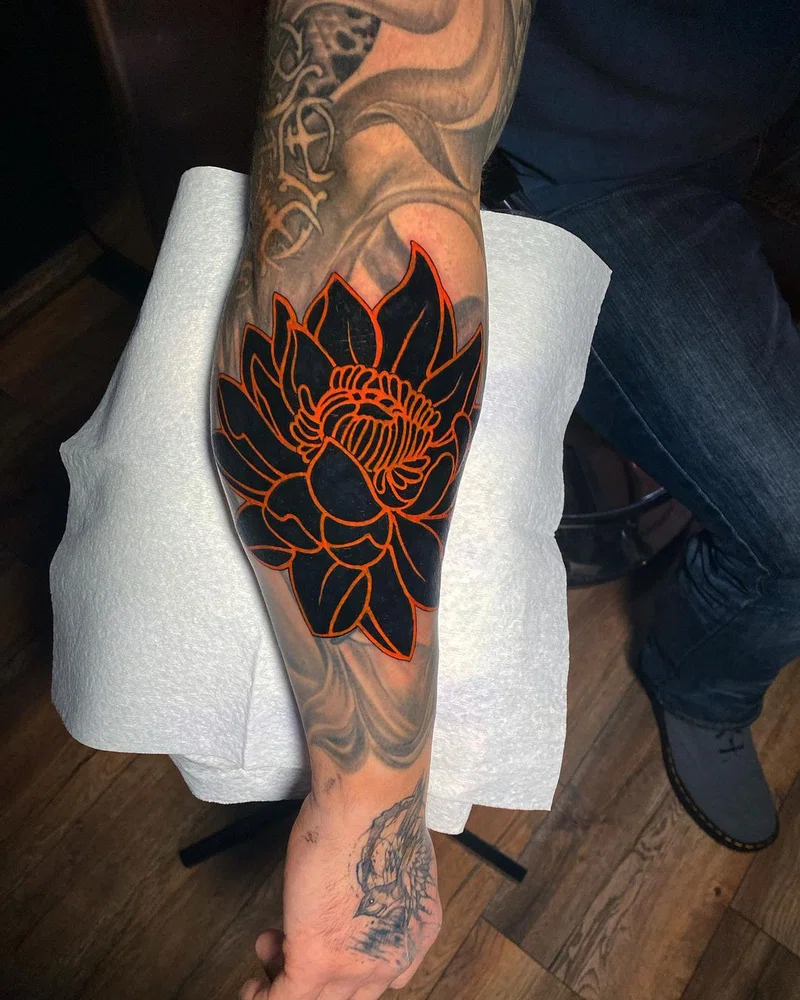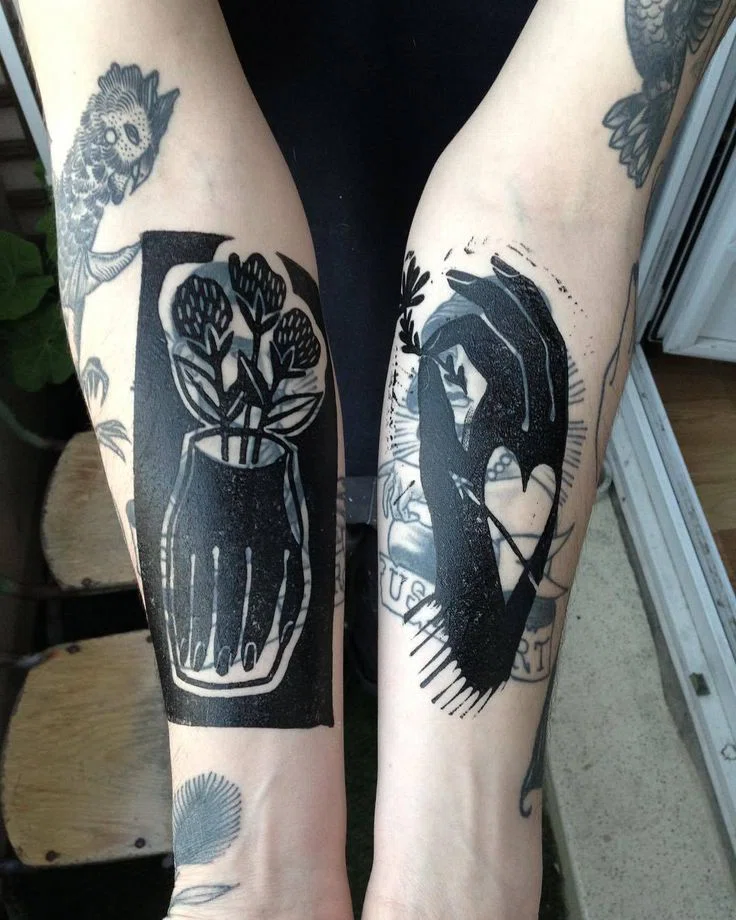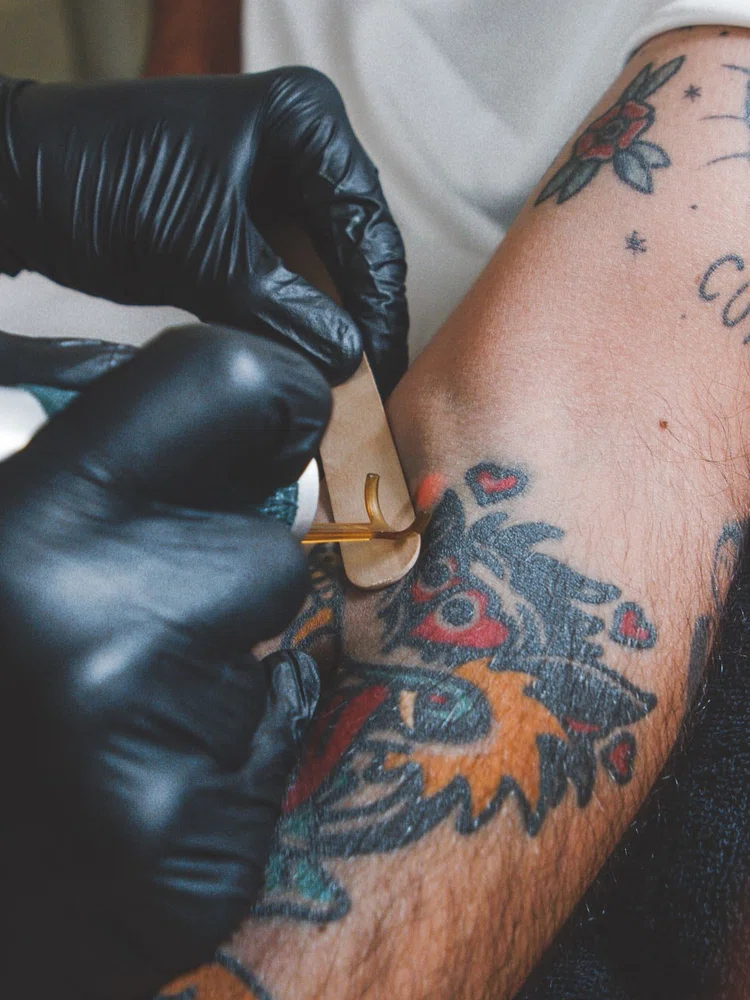Cover-up or laser removal, which option is best?
Analyzing the best option for when a tattoo no longer pleases
06 May 2024
When it comes to tattoos that no longer please, as an artist, you may encounter clients who seek your help for a cover-up or, in some cases, a blackout.
However, with the availability of laser removal, many people wonder which option is the most suitable and if either treatment poses any risks.
To clear up any confusion, we're here to provide expert insights and help you make an informed decision.
Cover up, an alternative to laser?
The art of cover-up tattoos involves skilfully concealing or replacing an old tattoo with a new one, either partially or entirely.


Clients seek this technique for various reasons, often of a deeply personal nature, such as regret over a poorly made tattoo, an outdated design, or a name of a person who no longer holds significance.
Such decisive factors lead clients to seek solutions from experienced artists like you.
As we mentioned in the article Tattoo removal: laser technique, the laser is an option. It can be a lengthy, costly, and painful process.
For this reason, many clients prefer the quick and less complicated option of a cover-up tattoo. As an artist, it is vital to be well-prepared and equipped with the necessary skills and knowledge to execute a flawless cover-up tattoo.
Here, we'll outline the key considerations to ensure your work meets and exceeds client expectations.
1- Black ink is more difficult to cover.
When it comes to covering up an old tattoo that consists entirely of black ink, the truth is that it can be an incredibly challenging feat. In such cases, it requires very pure pigments and bold colours to achieve successful cover-ups.
However, a complete blackout may be the only viable option if the existing black ink is too dark or extensive. It's important to note that this extreme solution should only be considered when covering up is no longer possible. As a skilled artist, you know the importance of approaching each case with careful consideration and expertise to deliver the best possible outcome for your clients.
2- On the contrary, black or dark inks are always used to make a cover.
The reason is that, as we said before, it is necessary to work with very dark inks and strong strokes so that the cover is in the best possible way. In this sense, black ink is usually the main one in this type of work.
3- Generally, the new tattoo is two to three times bigger than the old one.
For the old tattoo to become imperceptible, it is necessary to cover it perfectly. This is why the new one will have to be considerably larger; therefore, a much larger space will be needed.
4- When the tattoo to be covered is huge, things get a little more complicated.
As previously mentioned, covering a tattoo that is too large, leaving no space for a new design, can present a greater challenge for the artist.
However, creative solutions can still be found by adapting the new design or incorporating elements of the old tattoo into the new one. With a bit of ingenuity, a cohesive and visually stunning final product can be achieved.
5- Then, the process of making the tattoo does not vary much more than usual.
In addition to everything we tell you, this is a tattoo almost like any other. It is a matter of choosing the inks well and knowing which styles to use each time, so the tattoo can show off and hide the previous one without being noticed.
Many wonder if the healing process differs, but the answer is no. As much as there is old ink on the skin, the healing process does not change.
It is essential to communicate to the client the importance of taking extreme care during the healing process of their cover-up tattoo. Otherwise, there is a risk of ruining the entire piece, which would be an unfortunate outcome. Therefore, emphasizing the significance of proper aftercare practices is crucial to ensure the best possible outcome for the tattoo.
Laser removal, when no other option is left

Some people decide to remove a tattoo simply because they would rather not have more ink on their skin. But some people resort to the laser because they no longer have any other alternative.
These cases can be:
- Despite how it may seem, a client has multiple tattoos in the same area. However, as an expert artist, it's important to be aware that attempting to redo a tattoo in such a heavily tattooed area can be a significant challenge, and it may be unrealistic to expect a satisfactory outcome.
Therefore, it's crucial to advise your clients against this and provide them with the necessary guidance to make an informed decision while considering the potential risks involved.
- In cases where the old tattoo has been poorly executed, ink blowout is a risk. This effect can cause the inks to spread, making it almost impossible to cover up the tattoo. A complete blackout or laser removal may be the only viable option in such cases. As an experienced artist, it's essential to recognize when these solutions are necessary and to guide your clients accordingly.
For these cases and others, resorting to the laser may be the last (or only) option.
However, the use of lasers can be a great tool for tattoos.
Here, we’ll tell you why.
Opting for laser tattoo removal before a cover-up
This is a common and effective solution for those seeking to restore the aesthetics of their tattoos. When a tattoo is difficult to cover up, advising the client to undergo a few laser tattoo removal sessions can be a viable option to remove it partially.
After a reasonable amount of time has passed and the skin has fully healed from the laser treatment, a flawless cover-up can be achieved.
While some believe that an area exposed to the laser cannot be tattooed again, this is simply a myth.
In the opinion of dermatologists, there would be no risk except in specific situations where some extra complication or disease determines a real problem.
So, cover-up or laser removal?
In short, we can say that neither one nor the other option is better or worse. As we have seen, both can work very well together.
It is always necessary to analyse the case and talk with the client to reach an agreement without putting their health at risk and at the same time responding to a pleasant result.
It is important to clarify that if a cover-up is made, not all the designs that the client wants to tattoo will be able to be made. So, they must think together of a real option that meets the demands and needs of the old tattoo.
On the contrary, if the path is laser removal, the client must go to a specialized health centre and follow all the steps correctly to have a good healing process.
As such, they can confidently get back to you for a new tattoo without issues.
Have you ever had to do a Cover-up?
If you want to discover new tricks and improve your skills, we invite you to learn from experienced tattoo artists with our online tattoo courses.